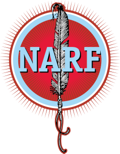What does Native American and American Indian mean?
The term “Native Americans” came into use in the 1960s and includes all Native people of the United States and its territories, including Native Hawaiians.
The terms American Indians and Alaska Natives denote the cultural distinction between the Indigenous peoples of the continental United States and those of Alaska.
When appropriate, it is preferable to refer to a person or community’s specific Tribal Nation affiliation rather than using monolithic terms like Native American.
Historically, the federal government has used terms like “Indian” or “American Indian” to refer to Tribal citizens. These terms continue to be used in different settings, especially because they are ingrained in the body of law known as Federal Indian Law.
Who can be a Tribal citizen?
Tribal citizenship is not a matter of race, rather, it is a political classification defined by Tribal Nations’ laws. Who may hold citizenship in any nation, including Tribal Nations, depends on criteria determined by that nation’s laws. Though Tribal Nations’ citizenship criteria may include consideration of lineage within the Tribal Nation, this does not make Tribal citizenship a racial status. Similarly, having lineage in a Tribal Nation does not automatically mean someone is a Tribal citizen, as they must meet any other criteria the Tribal Nation requires for citizenship (e.g. residency).
Likewise, the trust responsibility and treaty obligations to Tribal Nations and citizens are not based on race. “While the United States Constitution has an Equal Protection clause to ensure equal application of the law no matter an American citizen’s race, Tribal citizenship is a political status and treaty obligations have nothing to do with race,” said Native American Rights Fund (NARF) Deputy Director Matthew Campbell. “Misunderstanding the difference between the political status of citizenship and a designation of concepts like race has limited people’s understanding of Tribal-U.S. relations for centuries.”
What is a Tribe?
Historically, the federal government has used terms like “Tribes,” to refer to Tribal Nations and “Tribal member” to describe Tribal citizenship. These terms continue to be used in different settings, especially because they are ingrained in the body of law known as Federal Indian Law.
The terms “Tribal Nation” and “Tribal citizen” are preferable when the context allows, as these terms more accurately reflect Tribal sovereignty. For instance, the phrase “Tribal member” could be interpreted as membership in a non-governmental organization. Unlike citizenship, membership in an organization may be purchased or gained after associating in private relationships. By contrast, citizenship is a political status with criteria determined by law, resulting in legal rights and responsibilities as determined by the sovereign to which the citizen belongs
Tribal Nations are governments with inherent authority over their lands and citizens. This is a political status that predates the establishment of the United States and continues to be recognized by the United States. Tribal Nations have government-to-government relationships with the U.S. federal government. These relationships bear significant similarities to those which the United States shares with nations around the world. These relationships are evidenced by the numerous treaties that Tribal Nations have entered into with the United States. Under many of these treaties, the United States accepted important legal obligations to Tribal Nations.
What does “federally recognized” mean?
As of 2025, the federal government “recognizes” 574 Tribal Nations within the United States. At one point in history, the United States ceased to recognize many Tribal Nations by terminating their federal recognition. Federal recognition is important as it cements the formal government-to-government relationship between a Tribal Nation and the federal government. This affirms certain sovereign rights of Tribal Nations as well as federal obligations pursuant to the United States’ trust responsibility. Because of this, many Tribal Nations have sought to establish or restore their federal recognition.
Each Tribal Nation has its own laws and governmental structure. Some federally recognized Tribal Nations are confederacies of several Tribal Nations. Thus, a Tribal Nation may be composed of several cultures, languages, or ethnic groups.
Alaska is home to 229 of the 574 federally recognized Tribes, each with their own governments. Alaska’s Tribal Nations are not legally connected to Alaska Native Corporations (ANCs). ANCs were established pursuant to the Alaska Native Claims Settlement Act of 1971 (ANCSA), are for-profit corporations incorporated under Alaska State law, and are not sovereign governments. ANCSA does not undermine or otherwise negate the existence of Alaska’s Tribes, which enjoy the same inherent sovereignty and rights that other Tribal Nations do.
The United States does not currently recognize a government for the Kingdom of Hawaiʻi. As such, federal law sometimes addresses Native Hawaiians in their social or cultural organizational capacities as “Native Hawaiian Organizations.” The State of Hawaiʻi also includes an independent “fourth branch of government,” called the Office of Hawaiian Affairs, whose elected trustees safeguard Native Hawaiians’ unique education, health, housing, and land interests.
Read more about NARF’s work to preserve Tribal existence>>
What does “Tribal sovereignty” mean and why is it so important to Native Americans?
Tribal sovereignty describes the right and responsibility of Tribal Nations to govern themselves, their lands, and their people. It also includes the existence of a government-to-government relationship with the United States. A Tribal Nation is not a ward of the government, but an independent nation with the right to form its own government, adjudicate legal cases within its borders, levy taxes within its borders, establish its membership, and decide its own future fate.
Unlike the United States’ relationship to other nations, the United States has a “trust responsibility” to Tribal Nations. Through a complex series of historical relations and events with Tribal Nations, especially treatymaking, the United States has charged itself with this trust responsibility. Through treaties, Tribal Nations prepaid for trust obligations with their lands and resources. The United States Supreme Court has described this as “moral obligations of the highest responsibility and trust.” Seminole Nation v. United States, 316 U.S. 286, 297 (1942). The U.S. federal government has a trust responsibility to protect Tribal lands, assets, resources and treaty rights.
What is a reservation?
In the US, there are two kinds of reserved lands that are well-known — military and Indian. An Indian reservation can be a land base that a Tribal Nation reserved for itself when it relinquished its other land areas to the U.S. through treaties. More recently, Congressional acts, executive orders, and administrative acts have created reservations. Today, some reservations include non-Indian residents and land owners. Read more about NARF’s work to protect Tribal lands>>
Are Native Americans US citizens?
In 1924, the United States unilaterally conferred United States citizenship on citizens of Tribal Nations. Since then, every Tribal citizen born within the boundaries of the United States is a United States citizen. While the federal government’s action in 1924 was an encroachment on Tribal sovereignty and self-determination in the eyes of some, Tribal citizens now have and exercise the civil rights of all United States citizens. Still, more than 100 years later, Tribal citizens’ civil rights are constantly violated. For instance, Tribal citizens are disproportionately disenfranchised due to a host of obstacles to voting in local, state, and federal elections.
Are Native Americans exempt from military service?
Native Americans have the same obligations for military service as all other U.S. citizens.
Do Tribal citizens pay taxes?
As United States citizens, Tribal citizens pay federal and state taxes. However, states generally may not impose income, property, sales, or other taxes on Tribal citizens on-reservation. When off-reservation, Tribal citizens may be subject to state taxes. Federal, state, local, and Tribal governments may only collect taxes for activities within their respective jurisdictions. Tribal Nations and citizens contribute significant sums of revenue to federal, state, and local governments and economies, especially in states that have significant numbers of Tribal Nations with large land bases, such as Oklahoma.
Do Native Americans receive special rights or benefits from the US government?
Contrary to popular belief, Native Americans do not receive payments from the federal government because they have Indian blood. Some Tribal Nations receive benefits from the United States in fulfillment of treaty obligations or for the extraction of Tribal natural resources — a percentage of which may be distributed among the citizens of the Tribal Nation. For example, funds distributed to a Tribal citizen may represent mineral lease income on property that is held in trust by the United States or compensation for lands taken in connection with governmental projects. Read about NARF’s work on trust fund matters>>
What does all this mean?
The United States’ obligation to fulfill treaty obligations and act as a responsible trustee for Tribal Nations and citizens are grounded in the United States Constitution, treaties, statutes, executive orders, and other sources of federal law. Although Tribal Nations and their citizens have a host of robust rights under these laws, such rights are often ignored or violated. The Native American Rights Fund exists to address such injustice by raising awareness and vindicating the rights of Tribal Nations and their citizens. To learn more about Tribal rights, visit NARF’s websites at:
- Native American Rights Fund
- National Indian Law Library
- Standing Strong for Native Families
- Protecting Native Voting Rights
- Indigenous Peacemaking Project
- The Implementation Project
NARF provides legal assistance to Tribal Nations, Native organizations, and Native individuals nationwide who might otherwise have gone without adequate representation. NARF’s work depends upon the dedication of its employees and support from individuals and organizations alike. If you would like to help NARF increase its capacity to strengthen and defend Tribal sovereignty and to hold the United States accountable to fulfill its obligations to Tribal Nations and citizens, please donate today.


